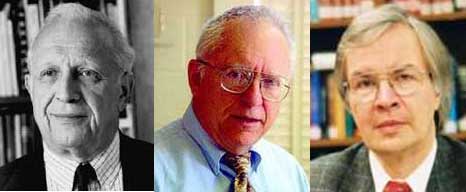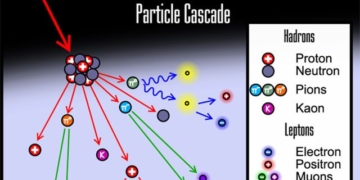On October 4, the Royal Swedish Academy of Sciences announced its decision to award the 2005 Nobel Prize in Physics to two American scientists and one German scientist for their contributions to advancing optical technology, making lasers, global positioning satellite technology, and other methods more precise.
 | ||
Roy J. Glauber, | John L. Hall | Theodor W. Hänsch |
Dr. Roy J. Glauber (80 years old) from Harvard University will receive half of the prize for his contributions to quantum theory related to optics, which describes the properties of light particles theoretically. The other half of the prize will be awarded to Dr. John L. Hall (71 years old) from the University of Colorado and Professor Theodor W. Hänsch (63 years old) from the Max Planck Institute for Quantum Optics. Hall and Hänsch contributed to the development of precision spectroscopy based on laser technology, which allows for the determination of the color of light from atoms and molecules with extreme accuracy.
Like radio waves, light is a form of electromagnetic radiation. This was described by Maxwell in the 1850s. His theory has been applied in modern information technology, based on signal transmitter and receiver technologies: mobile phones, radios, and broadcasting. For a receiver or detector to register light, it must be capable of absorbing the energy of radiation and transmitting this signal. The energy of radiation occurs in small packets known as quanta. A century ago, Einstein demonstrated how the absorption of a quantum (a photon) leads to the emission of photoelectrons. These indirect photoelectrons are recorded in devices when photons are absorbed.
Thus, light exhibits a dual nature, being both a wave and a stream of particles. Roy Glauber established the foundation of Quantum Optics. He was able to explain the fundamental differences between hot light sources, such as incandescent bulbs, and lasers. The important contributions of John Hall and Theodor Hänsch have enabled humanity to measure frequencies with 15-digit accuracy. Now, lasers can be created with extremely sharp colors. With frequency comb technology, scientists can provide precise measurements of light across all colors. This technology allows for research such as the stability of natural constants over time, the creation of extremely accurate clocks, and improvements in global positioning satellite technology (GPS).
The first Nobel Prize in Physics (in 1901) was awarded to Wilhelm Röntgen for the discovery of X-rays. Albert Einstein received the Nobel Prize in Physics in 2001 for his substantial contributions to theoretical physics and the discovery of the photoelectric effect. To date, a total of 176 scientists have been awarded the Nobel Prize in Physics. The 2005 Nobel Prize in Physics includes a check for nearly $1.3 million, a Nobel medal, and a certificate. The award ceremony will take place on December 10, the anniversary of Nobel’s death in 1896.
Minh Sơn (Compiled)

















































